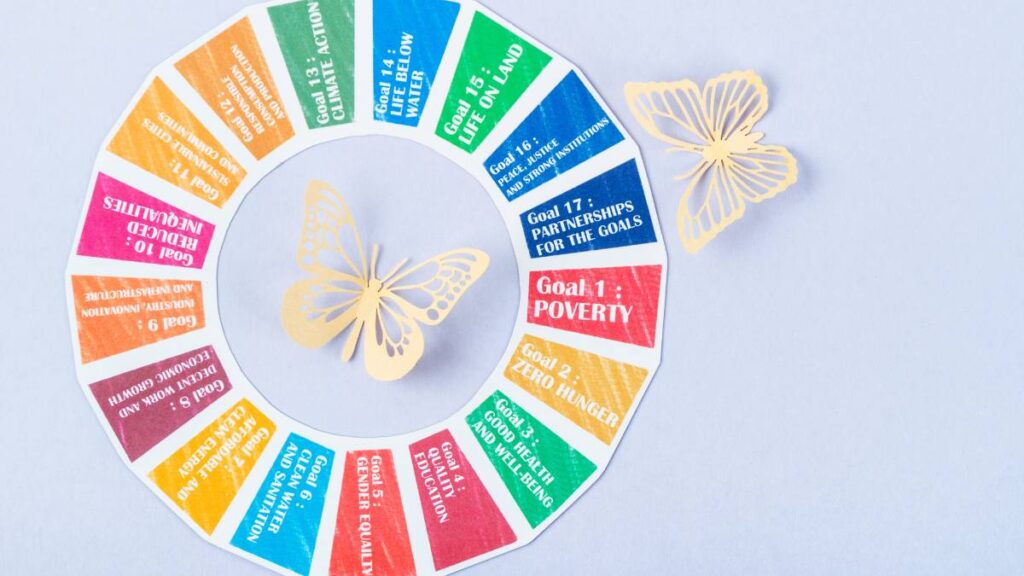The United Nations (UN) plays a pivotal role in shaping and promoting the Sustainable Development Goals (SDGs), a universal call to action to eradicate poverty, protect the planet, and ensure peace and prosperity for all. Since their adoption in 2015, the SDGs have served as a global blueprint for dignity, peace, and prosperity for people and the planet, now and in the future. This article explores the UN’s role in promoting these goals and the impact of its efforts on global sustainable development.
The Genesis of SDGs
The SDGs, also known as the Global Goals, were adopted by all UN Member States in 2015 as part of the 2030 Agenda for Sustainable Development. These 17 interconnected goals were designed to be a “blueprint to achieve a better and more sustainable future for all” by 2030. They address the global challenges we face, including poverty, inequality, climate change, environmental degradation, peace, and justice.

UN’s Role in SDGs Implementation
The United Nations spearheads the global effort to achieve the SDGs by:
- Framework and Advocacy: The UN provides a framework for implementing the SDGs and advocates for their universal adoption, ensuring that every stakeholder, from governments to private entities, aligns with the global agenda.
- Facilitation of Partnerships: The UN facilitates partnerships between governments, civil society, the private sector, and other stakeholders, leveraging the collective strength and expertise necessary to achieve the SDGs.
- Monitoring and Evaluation: Through its various agencies and entities, the UN monitors progress towards the goals, providing data, analysis, and recommendations to guide policy and action.
- Capacity Building and Resource Mobilization: The UN supports member states in capacity building, offering guidance, financial resources, and technical assistance to implement the SDGs effectively.
- Global Platform for Dialogue: The UN serves as a global platform for dialogue and cooperation, where issues can be discussed, strategies can be devised, and solutions can be shared.
Challenges in Achieving the SDGs
Despite significant progress in some areas, the journey towards achieving the SDGs by 2030 faces numerous challenges, including:
- Political Will and Governance: Inconsistent political commitment and weak governance structures in some countries hinder the effective implementation of SDGs.
- Financial Constraints: Adequate funding remains a significant challenge, especially for developing countries.
- Data and Measurement: Accurate data is crucial for measuring progress, but many countries lack the capacity to collect and analyze relevant SDG indicators.
- Global Inequalities: The uneven pace of development across and within countries poses a risk to achieving the SDGs on a global scale.
Progress on the Sustainable Development Goals (SDGs)
In July 2023, the United Nations released a comprehensive progress report on the Sustainable Development Goals (SDGs), providing a critical look at the global journey towards these ambitious objectives. The report’s findings underscore the complex landscape of progress and setbacks since the goals’ inception in 2015.
Key Findings from the 2023 SDG Progress Report:
- Deviation from Trajectory: Out of 140 targets with sufficient data, half experienced moderate to severe deviations from their intended paths. This indicates significant challenges in maintaining the momentum needed to achieve the goals by 2030.
- Refugee Crisis: The number of refugees doubled from 2015 to 2022, reaching a staggering 35 million people. This sharp increase highlights the growing global instability and conflicts contributing to the displacement crisis.
- Fossil Fuel Subsidies: There was a noticeable resurgence in fossil-fuel subsidies in 2021, returning to the levels of around US$732 billion last seen in 2014. This trend is alarming, given the urgent need to transition to renewable energy sources to combat climate change.
- Decline in Clean Energy Finance: International financial support for clean energy research and production in developing countries declined from a peak of US$26.4 billion in 2017 to just US$10.8 billion in 2021, hampering efforts to foster sustainable energy solutions.
- Youth Education and Employment: In 2022, 32% of young women (ages 15 to 24) were not engaged in education, employment, or training, marking a slight increase from 31% in 2015 and reflecting persistent barriers to youth empowerment and gender equality.
Regional Challenges
Certain regions, particularly Sub-Saharan Africa, Oceania (excluding Australia and New Zealand), and parts of Asia, faced acute challenges in meeting the SDGs:
- Poverty and Employment: In Sub-Saharan Africa, 36% of the employed population lived below the international poverty line of US$1.90 per day, a stark contrast to the global average of 6%.
- Nutritional Deficiencies: The prevalence of undernourishment was significantly higher in Sub-Saharan Africa (23%) and southern Asia (17%) compared to the global average of 10%.
- Child Mortality: The under-five mortality rate remained alarmingly high in Sub-Saharan Africa at 74 per 1,000 live births in 2020, underscoring the need for improved healthcare and child welfare initiatives.
The Future of SDGs and the UN
As the 2030 deadline approaches, the UN’s role in catalyzing global action, fostering international cooperation, and ensuring that no one is left behind becomes increasingly critical. The Decade of Action, launched by the UN Secretary-General in 2020, calls for accelerating sustainable solutions to the world’s biggest challenges.
Conclusion
The United Nations, through its leadership, advocacy, and partnership initiatives, remains central to the global endeavor to realize the Sustainable Development Goals. While the path to 2030 presents formidable challenges, the UN’s commitment to promoting and achieving the SDGs underscores a collective aspiration for a more equitable, prosperous, and sustainable world. As global citizens, the responsibility to support and implement the SDGs also rests with us. How will we contribute to this global mission for a sustainable future?
Further Reading
- International Development Committee, “Extreme poverty and the SDGs,” HC 149, 13 December 2022, and Government response, 6 March 2023.
- UN, “SDG report: 2023,” July 2023.

